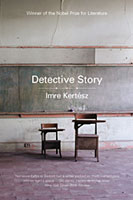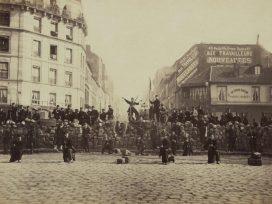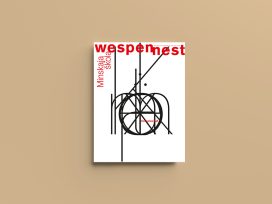 “Apart from a few old men who dip their pens in eau-de-Cologne and a few dandies who write like butchers, good translators do not exist,” Sartre opines in Words (which rather begs the question of where to rank his translator, Irene Clephane, to say nothing of any personal quandary on the part of the present author). One of Goethe’s maxims has another kick in the tail, but it is closer to the spirit of what I shall attempt: “Translators are to be regarded as busy matchmakers who exalt the great loveliness of a half-veiled beauty: they kindle an irresistible longing for the original.”
“Apart from a few old men who dip their pens in eau-de-Cologne and a few dandies who write like butchers, good translators do not exist,” Sartre opines in Words (which rather begs the question of where to rank his translator, Irene Clephane, to say nothing of any personal quandary on the part of the present author). One of Goethe’s maxims has another kick in the tail, but it is closer to the spirit of what I shall attempt: “Translators are to be regarded as busy matchmakers who exalt the great loveliness of a half-veiled beauty: they kindle an irresistible longing for the original.”
Despite Imre Kertész’s award of the Nobel Prize for Literature in 2002, only five of his literary works have appeared in English translation to date: his first and probably best-known novel, Fatelessness (published in Hungary in 1975); his third novel, Kaddish for an Unborn Child of 1990; the novella The Union Jack of 1991 (an English translation is buried in an anthology of postwar Hungarian prose and poetry, edited by George Szirtes and Miklós Vajda, under the title An Island of Sound, published by Harvill Press in the UK in 2004); a longish short story, Sworn Statement of 1993, an English translation of which appeared in The Hungarian Quarterly in 2001; and his fourth and most recent novel, Liquidation of 2003. Given the lack of English translations of Kertész, it was therefore perhaps hardly surprising that, in a short review to mark the UK paperback edition of the latter in October 2007, The Times critic offered the somewhat wild conjecture, “Readers may be reminded of another work about ‘disappearance’ resulting from the Holocaust: Georges Perec’s La Disparition.” The Guardian‘s critic, meanwhile, suggested, “I begin to suspect that the novel that Kingbitter [the novel’s protagonist] is searching for already exists: it’s Kertész’s first, Fateless[ness].” In fact, Kaddish is a far likelier suspect, but then it has not yet been formally published in the UK.
My concern here, however, is to locate some other voids. Eagle-eyed readers will have spotted that no mention was made of a second novel. This, which should properly be entitled The Failure (not Fiasco after the German translation: it is Beckett’s “At least one must strive for failure,” or indeed Sigmund Freud in Totem and Taboo: “And, as we know, failure is far more propitious for a moral reaction than satisfaction”). Published in Hungary in 1988, it saw the light of day in the dying months of the “soft” communist world of Kádárist Hungary, which was replaced by a virulent strain of capitalist exploitation (in many cases by the former “soft” communist bosses). It is the most substantial of Kertész’s works (half as long again as Fatelessness), the most complex and, I would submit, the most amusing (though The Union Jack and Sworn Statement take some beating).
That is not the only “void” either. Though many nuggets of information are vouchsafed by Kertész in his most recent work, The File on K (Dossier K in German), an extended interview-style survey of his life and published oeuvre that was brought out more or less simultaneously in Hungary and Germany in 2006, it makes no reference to a volume consisting of two novellas that appeared in Hungary in 1977, just two years after Fatelessness and a full 11 years before The Failure. One of those novellas will appear simultaneously at the end of January in the US (New York: Knopf) and the UK (London: Harvill Secker) under the simple generic title of Detective Story, to be followed a couple of months later, at least in the US, by The Pathseeker: Searching for Clues (New York: Melville House). The two novellas have little obviously in common, and they are perhaps also hard to link to the “canonical” works, so some discreet assistance will hopefully not go amiss.
Both works show well how Kertész is able to fashion potent “mini-dramas” that illuminate his overarching concerns. So why the coyness about mentioning them? “Honestly, Katya, I don’t know,” one might echo him, quoting Chekhov (“A Dreary Story”), in Sworn Statement. Perhaps he feels they are not of the same standard as his other works, or maybe he is simply concerned about how they will be interpreted, or rather misinterpreted, given that many reviewers and critics have “ghettoized” him as a “Holocaust” writer. In The File on K he signals, not for the first time, his discomfiture with the word “Holocaust”, referring with full approval to Giorgio Agamben’s comment that, “The unfortunate term ‘holocaust’ (usually with a capital ‘H’) arises from this unconscious demand to justify a death that is sine causa – to give some meaning back to what seemed incomprehensible” (Remnants of Auschwitz: The Witness and the Archive, 28). Perhaps Detective Story in particular (though The Union Jack or Sworn Statement would do equally well) is proof positive that it is wrong to pigeonhole Kertész: he is a writer pure and simple, genuinely one of the best, who addresses an audience that is far wider than is generally appreciated.
Both novellas could be said to concern a series of interrogations. In the case of The Pathseeker (the word is linked to Fenimore Cooper’s The Pathfinder, but in this story the seeker quite clearly does not find what he is seeking), the interrogations are not particularly arduous, or even of an official nature, though admittedly a surprise suicide figures in the denouement. The tension lies more in trying to work out where the various “interrogations” are located. Only one of the protagonists is given a name (Hermann), and at the start of the tale he is undergoing some kind of “grilling” by a nameless “commissioner”, though who commissioned him, and to do what, remains unknown to the end. The sites of the story (village or town or even country) are not indicated except for a few tantalisingly indirect hints: “the poet, so often damned and anathematised, who had picked fresh, juicy plums from these trees, as he remarked in his essay about the Romantic school, had been dead over a century now.” Or Hermann’s recommendation that the commissioner and his wife “should take their lunch in the famous hotel that had gained its name from the rhinoceros or hippopotamus […] – at any rate, a pachyderm of some sort.” Even so, The Pathseeker can be situated quite precisely in relation to Fatelessness.
Detective Story is plain sailing on the face of it. Almost all the protagonists are given a name, for a start, though that is only important for keeping track of the story, which takes place in an unnamed and anyway fictitious Latin American country under some undefined revolutionary dictatorship which, by the end of the tale, has been overthrown by some equally vague popular uprising (whatever gave you the idea it is Hungary in the 1950s?). The novella structurally takes the form of a memoir written by a man named Antonio Rojas Martens, a career policeman who is transferred to a secret-police body known as the Corps as one of a small team under a Major Diaz. The memoir is briefly introduced by Martens’s defence council with the remark: “The text that is published here is authentic. I personally have not interfered with it in any way apart from making corrections where stylistic shortcomings absolutely demanded it.”
By the time of writing this memoir, Martens has been found guilty of complicity in the execution of, among others, a young university student, Enrique Salinas, and his father Federigo Salinas, the wealthy proprietor of a chain of department stores. The text is not exactly confessional, but it bears striking resemblance to the tone, if not the context or structure, of the account Meursault gives of his murder of, and trial for, the murder of an Algerian in The Outsider. It outlines – in large part through verbatim extracts from a diary kept by Enrique – how the boy actively sought involvement in the country’s underground resistance movement and attracted the attention of Diaz’s team through being engaged in a decoy plot set up by Salinas senior in order to divert his son (this incidentally involves Enrique passing on, via one of Federigo’s employees, a series of numbered sheets of paper bearing the “coded” message ENAUSE, and it isn’t NAUSEE, tempting though it may be to think so).
Martens, by his own account at least, is nothing more than a low-ranking accomplice; it is just that his superiors have vanished: “There were three of us: Diaz, our boss (I can assure you all that he is never going to be found); Rodriguez (who has already been given a death, sentence just the once, though the scumbag deserves it a hundred times over); and myself, the new boy.” Nevertheless, Martens is prepared to accept his share of blame for the step-by-step process by which he becomes a party to torture. This makes Detective Story ultimately another way of illustrating a point made so emphatically near the very end of Fatelessness, when Gyuri Köves, freshly back in Budapest from his imprisonment in Buchenwald, argues with two elderly former neighbours about an individual’s personal responsibility for the “steps” he or she takes: “A senseless kiss, for example, is just as much a necessity as an idle day at the customs post, let’s say, or the gas chambers. Except that whether one looks back or ahead, both are flawed perspectives […] After all, there are times when twenty minutes, in and of themselves, can be quite a lot of time. Each minute had started, endured and then ended before the next one started.”
The anonymous “commissioner” of The Pathseeker and Martens in Detective Story could be said to exemplify what is referred to as the “executioner” by György or Gyuri Köves (nomen est omen: George or Georgie “Stony” or “Stone” in English), the narrator of Fatelessness and, more relevantly, protagonist of the novel-within-the-novel called “The Failure” that is written by the “Old Boy”, the main figure in the novel of The Failure. Moreover, “The Failure” contains the opening draft of a novel by a reclusive writer named Berg that carries the title “I, the Executioner”. One suspects that Kertész quite deliberately made people keep their eye on the ball: remember, “soft” Communism or not, this was still Kádárist Hungary. The main point here is to point to a significant quotation that Berg cites, but refuses to identify: “It might perhaps be pleasant to be alternately victim and executioner.”
The source is French, but it is certainly not Sartre, nor is it Camus, although, as Louise O. Vasvári and others point out, the latter influenced Kertész’s writings from Fatelessness on. Kertész himself dates his first encounter with Camus’s writings very precisely to early June, when he came across The Outsider (in Hungarian L’Etranger, or “The Stranger”, is rendered even more mysteriously as Közöny, or “Indifference”) during the 1957 Book Week in Budapest: “A yellow-backed little volume came to my hand, an unfamiliar book by a French author with a name that was unknown to me. While standing there I read a few sentences before looking at the jacket: it was priced at 12 forints […]. That was the second fatal blow for me. I didn’t get over it for years”.The Union Jack, incidentally, attests the revelatory impact of the first major influence, that of Thomas Mann, some six months earlier during the Hungarian revolution in late autumn of 1956.
It is interesting nevertheless to note that Camus started his 1938 review of Sartre’s La Nausée: “A novel is never anything but a philosophy expressed in images. And in a good novel the philosophy has disappeared into the images.” However, a more convincing fit with the “step-by-step” philosophy would be Camus’s own The Myth of Sisyphus, which is directly cited in the penultimate paragraph of The Failure. Here it is amusing to take Camus’s version of the myth as recycled by Péter Esterházy in Depending, one of the dozen or more “sections” of his landmark Introduction to Belles-Lettres that has not, as yet, been published in English translation (another void) – a 100-page novel of over 50 000 words, initially published in 1982, a salient feature of which is the absence of a full stop. The passage in question runs: “[…] he, K., a sort of Sisyphus despite himself, the struggle itself towards the heights is enough to fill a man’s heart, to Sisyphus each atom of that stone, each mineral flake of that night-filled mountain in itself forms a world, this universe henceforth without a master seems to him neither sterile nor futile, he, too, concludes that all is well, but Sisyphus teaches the higher fidelity that negates the gods and raises rocks, one always finds one’s burden again, I leave Sisyphus at the foot of the mountain“. Esterházy deliberately omits a sentence from the start of this quotation (or the end, depending how you look at it): “One must imagine Sisyphus happy”. Also noteworthy is Esterházy’s choice of the initial K. for his protagonist (in context this has more to do with the poet-novelist Deszö Kosztolányi than Kafka’s K., let alone Kertész. (Galley-Boat Log a fascinating commonplace book which documents Kertész’s reading matter and thinking, sports an intriguing reference to Franz Kafka, an even more abiding influence: “A bracketed entry in the Diary: (Ich finde die “K.” häßlich – I find K.s offensive).”
It does not contradict the earlier remark about Kertész’s not wishing to be categorised as a “Holocaust” writer that not one of his works, including those that are much more concerned with communist totalitarian regimes, lacks at least one specific reference to Hitler’s reign of terror. The framing novel of The Failure, for instance, refers to a book Köves has published about his camp experiences (the title is not given but obviously Fatelessness is meant), and he directly quotes from several other books, including a passage about Ilsa Koch, the “Bitch of Buchenwald”, taken from Jorge Semprun’s The Long Voyage. By way of contrast, the allusion in The Union Jack is almost unnoticeable: Ernö Szép is immortalised as “a tiny old chap […] swept along the icy streets like a speck of dust by the wind of disaster, drifting from one coffee-house to the next […] his hat […] a so-called ‘Eden’ hat, of a shade that had evidently once been what was called ‘dove grey'”, who introduces himself with the devastating phrase, “I was Ernö Szép.” Most non-Hungarian readers will not be aware that Szép (1884-1953) was a genuinely popular Hungarian poet, writer and journalist of Jewish origin, among whose novels was Adam’s Apple (1935), mentioned by the nameless narrator of The Union Jack. More significantly, however, he wrote a remarkably sardonic memoir of his travails in a forced-labour battalion, published in 1945 and translated by John Bátki under the title The Smell of Humans.
To return to the novellas, The Pathseeker may look to be free of even such exiguous references but, when the reader has worked out what its unstated subject is, it will be found to be replete with mentions of the sites of two concentration-camp complexes. Detective Story, by contrast, includes anti-Semitic remarks by Martens’ colleague, Rodriguez, who is also mentioned as reading an American book with Auschwitz in the title. One day Martens sees a small statuette sitting on Rodriguez’s desk and, on asking what it is, is told that it is a model of a “Boger swing”. This was (or is) a very real torture device “invented” (if that is the right word) by a Wilhelm Boger, who served at the front in the SS police before being wounded and posted to Auschwitz extermination camp as a guard in charge of preventing escapes. In 1965 a German court found him guilty of complicity in the murder of about 1000 inmates.
In closing, lest anyone should think that the British are somehow exempted from the proceedings, may I point to the eloquent testimony of The Union Jack: “A hurtling jeep-like motor suddenly appeared, with the British red-white-and-blue colours, a Union Jack, draped over the entire radiator […] at the very moment when the applause seemed to coalesce, almost solidify, an arm stretched out hesitantly, almost reluctantly at first, from the left-side window of the car […] probably in response to the clapping, it cautiously dipped several times […] It was a wave, a friendly, welcoming, perhaps slightly consolatory gesture which, at the very least, adumbrated an unreserved endorsement and, by the by, also the solid consciousness that before long that same gloved hand would be touching the rail of the steps leading down from an aircraft onto the runway on arrival home in that distant island country. After that, vehicle, hand and Union Jack – all disappeared in the bend of the road.” Another disappearing act, in other words, a British tradition along with myopia. After all, what other nation would keep alive (albeit in a somewhat corrupted form) a remark attributed to its greatest admiral: “I have only one eye, – I have a right to be blind sometimes […] I really do not see the signal!”
How does the chorus from that Eurhythmics song go? “Maybe your heart is made of stone, maybe I’m just too blind to see. Maybe your heart is made of stone, maybe I’m just too blind to see.”
Detective Story by Imre Kertesz, translated by Tim Wilkinson, is published in the UK by Harvill Secker on the 22 January 2008.

 “Apart from a few old men who dip their pens in eau-de-Cologne and a few dandies who write like butchers, good translators do not exist,” Sartre opines in Words (which rather begs the question of where to rank his translator, Irene Clephane, to say nothing of any personal quandary on the part of the present author). One of Goethe’s maxims has another kick in the tail, but it is closer to the spirit of what I shall attempt: “Translators are to be regarded as busy matchmakers who exalt the great loveliness of a half-veiled beauty: they kindle an irresistible longing for the original.”
“Apart from a few old men who dip their pens in eau-de-Cologne and a few dandies who write like butchers, good translators do not exist,” Sartre opines in Words (which rather begs the question of where to rank his translator, Irene Clephane, to say nothing of any personal quandary on the part of the present author). One of Goethe’s maxims has another kick in the tail, but it is closer to the spirit of what I shall attempt: “Translators are to be regarded as busy matchmakers who exalt the great loveliness of a half-veiled beauty: they kindle an irresistible longing for the original.”




